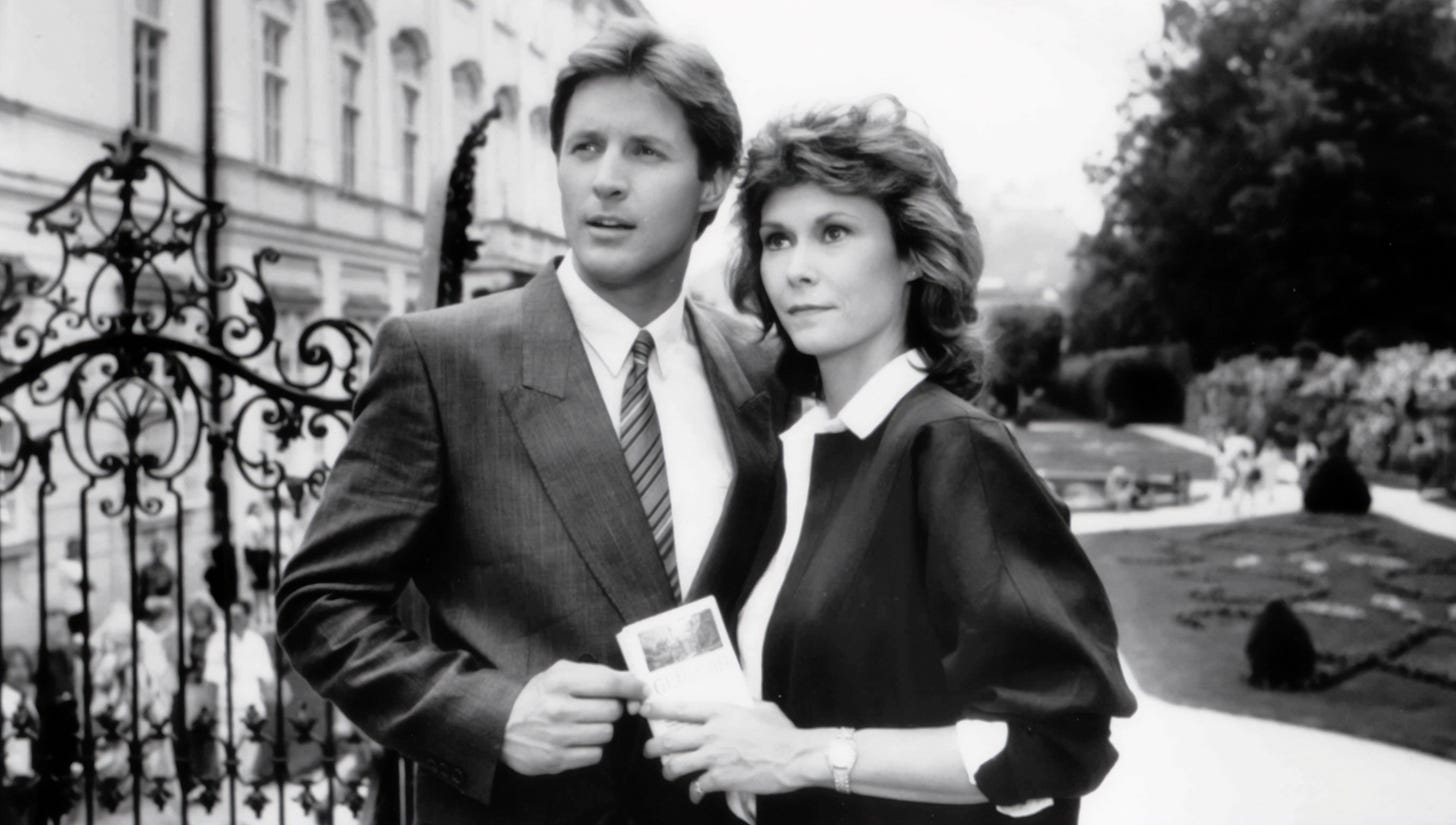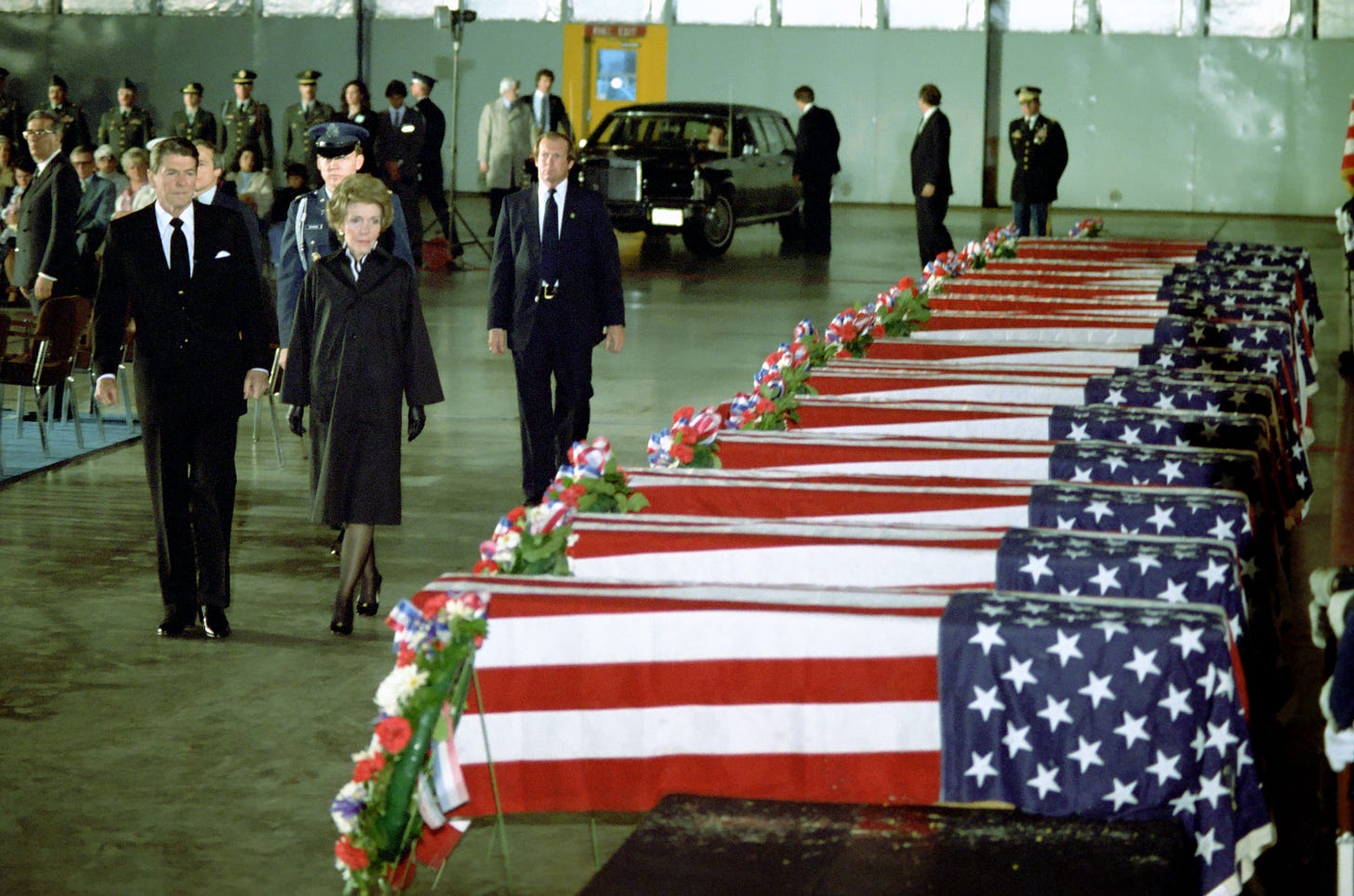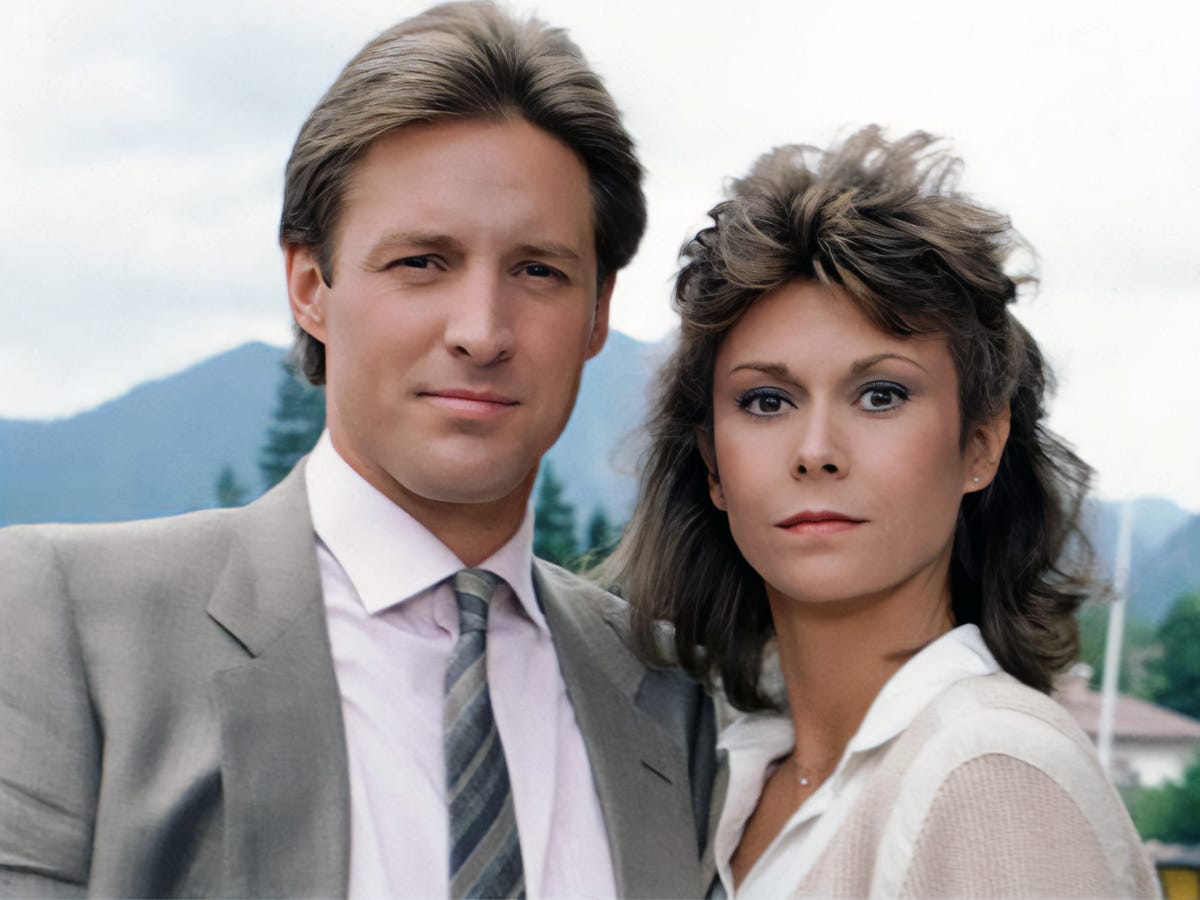Television: 'Scarecrow and Mrs. King' and the Politics of 2025
How is the legacy of a spy series from the mid-80s reflecting on our current political and social environment?
Before this year gets even weirder than it should, here’s an interesting pop culture concept to consider: if we’re living in a world of make-believe government employees posing as ‘serious actors’ refusing to enforce a code of conduct that should be believable, just remember we lived in a world where serious actors posed as make-believe ‘government employees’ and enforced a code of conduct that appeared (mostly) believable.
For those of a certain generation with an adherance to appointment television, the 1983-1987 premise of the CBS series Scarecrow and Mrs. King was a melding of mid-Cold War spy drama, espionage, Reagan-era references, and the tale of two divergent personalities — “Agency” operative Lee Stetson, code-named Scarecrow (Bruce Boxleitner) and suburban divorced mother of two Amanda King (Kate Jackson) — thrown together by circumstance, who then went on to fight the ‘bad guys’ inside and outside the Washington, D.C. political arena.

You can tut-tut the dramatization (and production values) from a 40-year perspective, but after a close watch of all 88 episodes, it becomes clear that a majority of storylines play out in a its so close to 2025 real-life that it hurts declaration of injustice, while fighting an uphill battle in thwarting domestic and global threats under a cloak of secrecy so dense that the above mentioned “Agency” was quite literally never explained, even in a fictionalized atmosphere for the show.
The four-year timespan wisely pointed to the paranoia and deep divide among factions in Central America, the Middle East, and the Soviet Union, which played out in numerous episodes. When the show began on October 3, 1983, President Reagan’s administration had come through the April 18 suicide bombing of the U.S. Embassy in Beirut, Lebanon that killed 63 people of which 17 were American and then the October 23 bombing of the barracks of the Multinational Peacekeeping Force, also in Beirut, which killed 307 people, including 241 U.S. military personnel.


The sheer variety of outlier characters that crossed paths with Stetson and King harkens to a time when the mechanisms of U.S. undercover intelligence gathering were still considered on the fringe of mainstream America. The choice to portray a suburban mom within a top-secret organization meant that the focus of the show embraced aspects that were not normally portrayed within the genre. In previous characterizations, villains were one-note baddies who spoke with an undefined accent and were given less-than-plausible backstories. For Scarecrow and Mrs. King, the antagonists often popped up at the start with a reasoned storyline (frequently focusing on the easy-to-target KGB), encased with someone relatable to Stetson, and situations that needed the intervention of the mismatched duo.

Throughout the show’s run, what may now be considered quaint references to espionage, counter-terrorism, and the use of military force were touted consistently, often within the context of real-world figures. In that realm, one name was amplified loud and clear: Caspar Weinberger. As President Reagan’s Secretary of Defense for both terms, his hard-line stance against the Soviet Union was brought to the fore on multiple occasions, while being name-checked in response to a crisis relevant to ‘national security.’ His reputation synced with the mindset of the show, yet his fall from grace as part of the Iran-Contra investigations has left his legacy tarnished for future generations.

What propelled the show’s popularity was the casting of the two leads and the necessary chemistry needed to make this kind of premise engaging. The career success of Boxleitner, who had come through several action-oriented ventures both in television (How The West Was Won) and film (Tron), was juxtaposed against Jackson and her name recognition from the blockbuster TV series Charlie’s Angels. Both came across as believable and natural in their interactions, which saw them grow from a one-note association played for laughs to a maturing (read: love) in their relationship during the show’s run and has subsequently fueled a decades-long appreciation after the show ended prematurely due to Jackson’s cancer treatment during the last season.
✪
Many critics of the time hammered Scarecrow and Mrs. King for its formulaic storylines and suspension-of-disbelief narrative. Granted, when viewed through the lens of darker times today, one can see why it’s perceived as a lightweight relic of legacy programming. However, what keeps its relevance alive was the attention to period-correct details addressing the U.S. intelligence force during the Reagan years. Even as technology evolved during that time, transitioning from paper to computers and walkie-talkies to car phones, one can’t help but notice how closely the show revolved around character growth and where the nation was headed in 1987.
Although it’s pure speculation, the question of ‘what could have happened’ might have pushed Scarecrow and Mrs. King into an entirely different universe only 15 days after the series finale…
"Mr. Gorbachev - tear down this wall." - Ronald Reagan, Berlin, 1987/YouTube
Scarecrow and Mrs. King is available to stream for free on Tubi. The complete series (and individual seasons) are available on DVD from Amazon.







Kate Jackson was the bees knees. She was my favorite “angel” for her leadership role as a character.
I loved this show! Like Steve’s comment above, some of the nuanced themes went over my head. No matter; it was fun to watch.